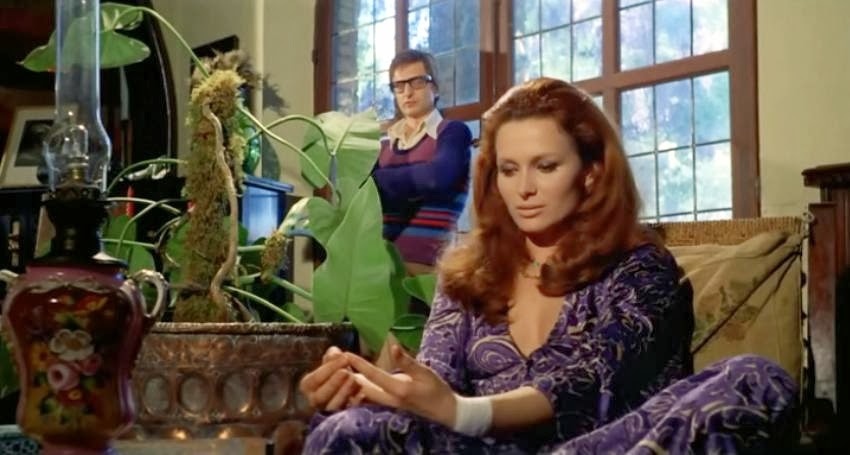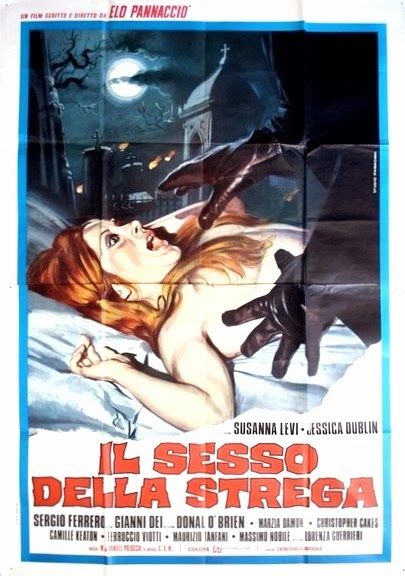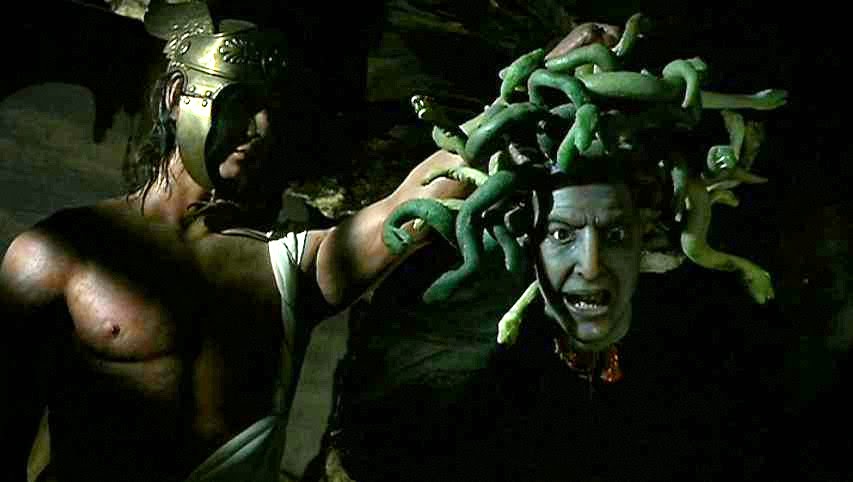There is a lot to say about unoriginality in some of AlbertoDe Martino’s films, with Holocaust 2000 and The Antichrist being quickly produced cash-ins of The Omenand The Exorcist, respectively, and Operation Kid Brother is probably the boldest Bond rip-off ever. However, these films are also the best of their kind; The Antichrist is easily the best Exorcist knock-off, and Operation Kid Brother, along with De Martino’sSpecial Mission Lady Chaplin, probably ranks in to any Eurospy fan’s top ten list.
The Italian-British co-production Holocaust 2000(akaRain of Fire) is regarded as being better than any of The Omen sequels, and so, it would seem to me that to call Holocaust 2000 a lackluster version of The Omen would be just as foolish as calling Fulci’sZombie Flesh Eaters a lackluster take on Romero’sDawn of the Dead. I won’t go as far as saying they are better, but the aforementioned films by De Martinomost certainly are not mere copies or inferior imitations of their source inspiration, yet they do have certain superior qualities and, in their own way, became influential themselves.
It is obviously smart from the business end to capitalize on successful international movies by creating other movies in a similar vein, catering to the taste of the audiences of the time, exploiting the spirit of the age. I imagine that this is what most likely gave these kind of genre films the green light from producers who probably cared more about what other movies the pitched script was similar to and not necessarily how original it was. Call this trendy, if you must, but a lot of these movies brought the source inspiration to different directions and new heights and therefore have an originality that can be discovered for those willing to look beneath the surface.
Made more towards the tail end of writer director Alberto De Martino’s filmmaking career, Holocaust 2000 stems its tale from controversy over the progression and eventual implementation of thermonuclear power and the potential onslaught of the apocalypse, Book of Revelation style but with a topical twist on the prophesized seven headed beast.
The movie stars Kirk Douglas as the main character, Robert Caine of Caine Enterprises, and this is basically his story. So there’s a lot of time spent with him. Fortunately he’s great here, pulling off a range of different acting modes between stoic but friendly business man, helpless and panic stricken, and pissed off survivor. Though about sixty years old at the time the film was made, Douglas still carries a young vitality, appears in good shape, and his character manages to find himself a beautiful young lover, Sara (Agostina Belli), who’s around the same age as his son, Angel Caine (Simon Ward).
The movie stars Kirk Douglas as the main character, Robert Caine of Caine Enterprises, and this is basically his story. So there’s a lot of time spent with him. Fortunately he’s great here, pulling off a range of different acting modes between stoic but friendly business man, helpless and panic stricken, and pissed off survivor. Though about sixty years old at the time the film was made, Douglas still carries a young vitality, appears in good shape, and his character manages to find himself a beautiful young lover, Sara (Agostina Belli), who’s around the same age as his son, Angel Caine (Simon Ward).
I don’t know if it might just be Ennio Morricone’s apocalyptic sounding score, but the way this movie insinuates the end of humanity really creeps me the Hell out. It doesn’t instill in me any sort of insecurity about us blowing up the world; I don’t believe we are close to the end, but it sure can be terrifying to think about, especially from a more evil and supernatural point of view in the gory and nightmare film-vision this movie provides us with.
The narrative structure feels very episodic and also, unlike a lot of its Eurohorror contemporaries, very comprehensive and coherent. It almost feels like a TV series, condensed into one-hundred and two minutes, with some of the requisite drama motifs that would usually accompany such serialized fare, like troubles between father and son (which is to be expected if you're pretty certain your son is the antichrist), relationships, and pregnancy dilemmas. Perhaps it might even get a little on the talky soap side at times. But it’s a compelling, if a little long, story, and if you watch the English version, Rain of Fire, you’ll come across some really great gore. Many believe that the helicopter head chopping scene, here, was later ripped off in Dawn of the Dead.
The grand highlights are the insanity that is unleashed in Caine’s panicky nightmare and more than once in an insane asylum run by a, I’d say underused, character played by genre stalwart Adolfo Celi. The inmates in this asylum are like twenty Renfields in one place. The scenes with the protestors are pretty chaotic and entertaining, too. The repeating chant by the protestors should say it all: “What do our children want to be when they grow up? Alive!!!”
I have the Italian DVD for Holocaust 2000 by Legocart. It’s readily available on Amazon, and I didn’t know it was only in Italian, without subs or dubbing. I accidently ordered it since it is under the more well-known title Holocaust 2000. When I finally saw it in English as Rain of Fire I noticed that the movie is a lot gorier than the Italian DVD had led me to believe. Though, towards the end, there’s a really weird unexplained scene with a visual of a dead baby in a hospital that I thought was unnecessary, I still think the English version, Rain of Fire, is the better version to watch; it’s available on Amazon Instant under that title. It appears to me that the actors originally spoke English, so they are actually dubbed in Italian on the Italian version. I’m assuming we are hearing all of the actors’ original voices in the English version, even Adolfo Celi’s voice, which is usually dubbed due to his heavy Sicilian accent. I honestly loved Agostina Belli’s lovely Italian accent.
With enough patience, viewers will notice that this is another great addition to the Italian horror canon of the ‘70s, and even though The Omen comes to mind, Holocaust 2000 will still end up feeling quite different. The extended nightmare scene of a naked and helpless Caine on some kind of island of salt with some fun blue screen work of something big coming out of the sea shouldn’t be missed by any fan of nightmare sequences in a horror movie.
There’s this doomy and foreboding feeling of the approaching end that the movie pulls off rather well. I also like the commentary on the occasional desire to go back to the simple and basic things, seen from Caine’s retreats to his country house with his lover, and escape, temporarily, from the lifestyle that the progressing developments in technology enables. Despite my own reliance of modern conveniences, I still sometimes feel a desire to disconnect for a bit every now and then, unplug the internet, forget about video games and movies for a while and rediscover again what it’s like to have to go outside for entertainment.
 |
| "Progress... And after centuries of it, all we want is to come back where we started from..." Robert Caine / Kirk Douglas |
















































































































































